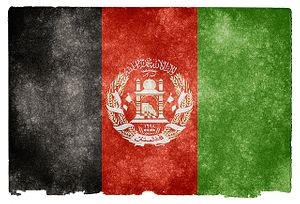By Catherine Putz

Intra-Afghan talks began on September 12 with high hopes and deep concerns. Just shy of three months later, the two sides — the Afghan government and the Taliban — have agreed on a three-page document setting the rules and procedures for negotiations between them. Setting an agenda comes next.
U.S. Special Representative for Afghanistan Reconciliation Zalmay Khalilzad welcomed the agreement in a series of tweets, calling it a “significant milestone.”
“This agreement demonstrates that the negotiating parties can agree on tough issues. We congratulate both sides on their perseverance,” he tweeted, thanking Qatar for hosting the talks. The Taliban have maintained a political office in Qatar since 2013.
“The people of #Afghanistan now expect rapid progress on a political roadmap and a ceasefire. We understand their desire and we support them,” Khalilzad tweeted.
The agreement has been heralded as a “breakthrough,” even though the precise details have not been reported. For the last three months, the major sticking points between the two sides were said to be Taliban demands that any disputes during the negotiations be settled using Hanafi jurisprudence and that the talks should build upon the deal the Taliban signed with the U.S. government in February. The Afghan government had resisted these points.
A TOLO News report yesterday said, “Some of the rules for the talks include the start of sessions with the recitation of the Holy Quran, breaks in sessions for prayers, seeking direction from the Sunnah and the Quran when disputes are encountered, and prayers at the end of each session.” The same report also cited the Taliban as claiming that the U.S.-Taliban deal had been accepted as guidelines for the ongoing talks. On that particular point, the TOLO News report stated, the Afghan government said more clarification was needed.
The Associated Press and various Afghan media outlets noted accusations that Kabul was holding up the process, though whatever objections the Afghan government had have been either cleared up or set aside.
That such a small step has garnered such high praise serves to illustrate just how intractable the problem of peace in Afghanistan has become and how eager observers are to see any signs of progress. But the details will matter. It may seem silly to dicker over procedure, but which side sets the rules is an indicator of which side will dominate the talks.
The deep concerns that accompanied the beginning of negotiations remain. Violence persists in Afghanistan and the United States is running for the exits on the orders of a lame duck president in denial. The Taliban and the United States have different interpretations of the deal they signed in February, but it’s also clear that the terms and conditions don’t matter much to Trump. The Taliban, for example, have reportedly retained ties to al-Qaida, a direct violation of the agreement.
Writing in The Atlantic, Jim Golby summarized the situation aptly: “Trump is leaving behind an unsustainable presence in Afghanistan, a crisis for the Afghan people, and a mess for the Biden-Harris administration.”
If it took three months to pen a preamble, setting the rules for negotiations, we can’t expect an agenda to come together any more quickly.
For Afghans, a ceasefire is a top priory, but Taliban pressure has kept pace alongside the peace talks. Will the Taliban cede their leverage over the Afghan government at a moment when its allies are drawing down their forces?
Thorny issues like women’s rights and what place the Taliban have in the political future of Afghanistan have yet to be broached and it will be difficult to reconcile the Taliban’s past positions with the existing state of affairs in Afghanistan.
No comments:
Post a Comment